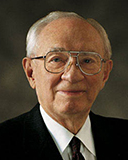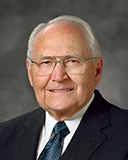
The last weeks have seen the fast spreading of the coronavirus in several countries. In Northern Italy, for example, people have panicked and run to buy food and other essential items, emptying shelves in many stores.
A great number of photos and videos showing empty shelves in various supermarkets in the country’s north have been posted to Twitter and other social media.

As of yesterday, February 27, Italy reported 650 cases of coronavirus and 17 deaths. According to Worldometer this is the fatality rate for the coronavirus:
COVID-19 Fatality Rate by AGE:
*Death Rate = (number of deaths / number of cases) = probability of dying if infected by the virus (%). This probability differs depending on the age group. The percentage shown below represents, for a person in a given age group, the risk of dying if infected with COVID-19.
| AGE | DEATH RATE confirmed cases | DEATH RATE all cases |
| 80+ years old | 21.9% | 14.8% |
| 70-79 years old | 8.0% | |
| 60-69 years old | 3.6% | |
| 50-59 years old | 1.3% | |
| 40-49 years old | 0.4% | |
| 30-39 years old | 0.2% | |
| 20-29 years old | 0.2% | |
| 10-19 years old | 0.2% | |
| 0-9 years old | no fatalities |
The above statistics shows that the coronavirus is particularly deadly for older people and minimally dangerous for younger ones. It kills more than the flu in percentage, but it’s not as deadly as the SARS, that has a fatality rate of 9.6% compared to coronavirus average fatality rate of 2.1%.
Because the coronavirus is a new strain that had not been previously identified in humans, and there aren’t yet available vaccines, certain levels of panic are already visible in parts of the population, even if most people will not be seriously affected by it.
Emergency Preparedness for Latter-day Saints
Members of The Church of Jesus Christ of Latter-day Saints believe and apply the principle contained in the scripture that says:
‘If Ye Are Prepared Ye Shall Not Fear’” (D&C 38:30)
This is why they try to be prepared for emergencies. When we are prepared, we can more easily withstand the inevitable calamities and crises that are coming, including the coronavirus.
This is why, while most people around the world don’t worry about storing food or other essential items until the last moment, most members of The Church of Jesus Christ of Latter-day Saints already have a storage. They are taught principles of self-reliance as a way of life so that they may be prepared to better withstand difficulties and challenges such as natural disasters, illness, job loss and other unplanned events.
For decades, for example, members of The Church of Jesus Christ of Latter-day Saints have been urged to keep a year’s supply of food, even fuel if possible, to be prepared in the event of an emergency.
“Let us again encourage each individual and family to be fully prepared in the elements of personal and family preparedness,” Elder Thomas S. Monson, then of the Quorum of the Twelve Apostles, reiterated in 1981.
The Church even provides an Emergency Preparedness and Response Guide to help families and local congregations prepare for emergency situations. This guide helps families and congregations learn how to plan and prepare for emergencies and how to act and respond in each phase of an emergency—before, during and after.
For more information, visit providentliving.lds.org.
Messages from Church Leaders about Emergency Preparedness

Gordon B. Hinckley, “If Ye Are Prepared Ye Shall Not Fear,” Oct. 2005 general conference

Henry B. Eyring, “Spiritual Preparedness: Start Early and Be Steady,” Oct. 2012 general conference

L. Tom Perry, “If Ye Are Prepared Ye Shall Not Fear,” Oct. 1995 general conference
L. Tom Perry, “Becoming Self-Reliant,” Oct. 1991 general conference
L. Tom Perry, “The Need to Teach Personal and Family Preparedness,” Apr. 1981 general conference

Marion G. Romney, “Principles of Temporal Salvation,” Apr. 1981 general conference

Spencer W. Kimball, “Family Preparedness,” Apr. 1976 general conference
